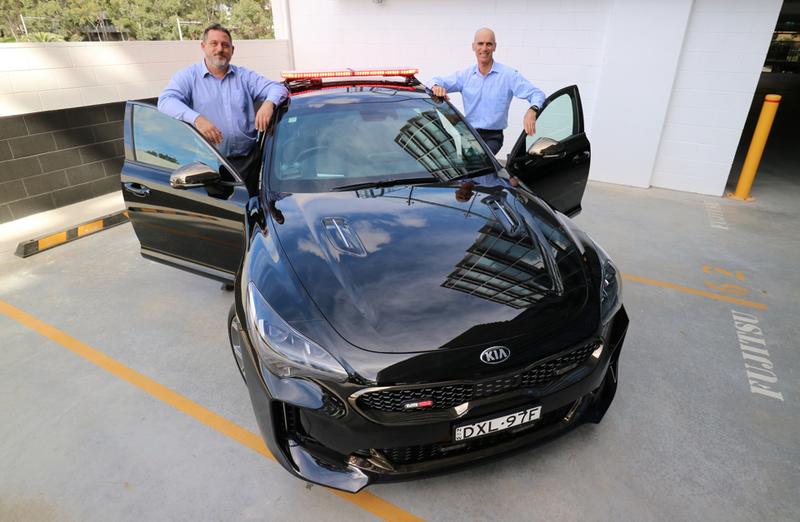KIA and Fujitsu unveil cable-free concept cop car
- 01 May, 2019 10:06

Fujitsu and KIA Motors Australia have developed a concept cop car to demonstrate to local police forces.
The prototype “artificial intelligence-enabled digital police car of the future” bundles a number of standard in-car systems, like Mobile Data Terminals (MDT), number plate recognition technology, In-Car-Video (ICV) and radar into the vehicle’s dashboard infotainment system.
The result reduces the number of cables and screens inside the car, which can cause issues around airbag deployment and block vehicle controls and air conditioning vents, the companies said. The reduction in equipment also reduces the vehicle’s weight, resulting in greater fuel efficiency.
“To build each highway patrol police car now requires multiple tenders from numerous individual suppliers for each piece of equipment…Fujitsu’s enhanced vehicle ecosystem integrates these and other individual components, simplifying the installation and removal of vehicle equipment and bringing greater agility and efficiency to the police force,” said Ian Hamer, principal architect at Fujitsu Australia.
By bringing disparate systems together, officers can use a single login to access all of them. In the concept car this is done with a biometric pad on the gearstick.
The two companies worked with Whelen Engineering to develop a new modular configuration of the rooftop light-bar that will result in “a less invasive installation using one umbilical cord instead of nine separate cables”.
Cameras are also fitted to the light-bar, “at the optimum height to record video evidence”.

The concept is based on KIA’s standard Stinger model, which is currently used by the Queensland, Northern Territory and Western Australian police forces for use as highway patrol vehicles.
Fujitsu will soon integrate police radar into the car’s existing display, removing the dash mounted control box and "irritating doppler tone" produced when using the radar.
The second phase of the project will also apply AI capabilities to camera feeds which will be able to “identify a target car’s manufacturer and colour” to recognise stolen cars in car-parks and traffic.
“The technology will be able to detect if an offender has drawn a weapon and automatically send duress signals,” the companies said.
“We identified the amount of systems redundancy within the current vehicle fit-out and are excited to work with Fujitsu to push for a higher degree of integration of law enforcement systems within the Stinger,” said Chris Forbes, KIA national fleet manager.
“By reducing the amount of physical technology within the car, the vehicle can be modified or serviced by any KIA dealer in Australia, reducing the time previously spent servicing vehicles at specialised facilities,” he added.
Fujitsu Australia and New Zealand CEO Mike Foster said the company was also seeking to extend the approach to ambulances, fire appliances, security vehicles, and taxis.
“Fujitsu’s innovative technology solutions, including AI and video analytics technology, coupled with KIA’s cutting edge vehicle platform has the potential to transform emergency services vehicles. We believe this approach has a much wider application than just use within the police force,” he said.

